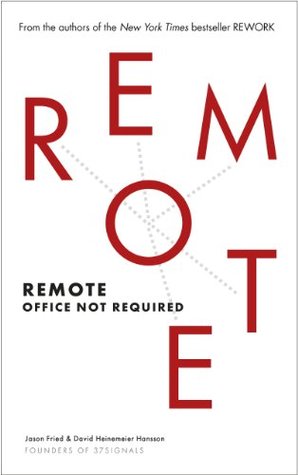More on this book
Community
Kindle Notes & Highlights
A busy office is like a food processor—it chops your day into tiny bits. Fifteen minutes here, ten minutes there, twenty here, five there.
It might take a bit of time and practice to get the hang of working asynchronously with your team, but soon you’ll see that it’s the work—not the clock—that matters.
Embracing remote work doesn’t mean you can’t have an office, just that it’s not required. It doesn’t mean that all your employees can’t live in the same city, just that they don’t have to. Remote work is about setting your team free to be the best it can be, wherever that might be.
“If we’re struggling with trust issues, it means we made a poor hiring decision. If a team member isn’t producing good results or can’t manage their own schedule and workload, we aren’t going to continue to work with that person.
When you can’t see someone all day long, the only thing you have to evaluate is the work.
Forcing everyone into the office every day is an organizational SPoF. If the office loses power or Internet or air conditioning, it’s no longer functional as a place to do work. If a company doesn’t have any training or structure to work around that, it means it’s going to be unavailable to its customers.
Remember, there’s no such thing as a one-hour meeting. If you’re in a room with five people for an hour, it’s a five-hour meeting.
Even the most introverted are still part of Homeous Socialitus Erectus, which is why prisoners fear The Hole more than living with other inmates. We’re simply not designed for a life of total solitude.
A manager’s natural instinct is to worry about his workers not getting enough work done, but the real threat is that too much will likely get done. And because the manager isn’t sitting across from his worker anymore, he can’t look in the person’s eyes and see burnout.
People with the power to change things need to feel the same hurt as those who merely have to deal with it.
Getting stuff done while working remotely depends, first, on being able to make progress at all hours. It’s no good twiddling your thumbs for three hours waiting for a manager to grant you permission, or hoping a coworker gets up soon so he or she can show you how something works in the remote world.
Start by empowering everyone to make decisions on their own. If the company is full of people whom nobody trusts to make decisions without layers of managerial review, then the company is full of the wrong people.
What is the case is that people are often scared to make a decision because they work in an environment of retribution and blame. That style of work is very incompatible with remote work.
In thirty years’ time, as technology moves forward even further, people are going to look back and wonder why offices ever existed.
Remote work has already progressed through the first two stages of Gandhi’s model for change: “First they ignore you, then they laugh at you, then they fight you, then you win.” We are squarely in the fighting stage—the toughest one—but it’s also the last one before you win.


